

The magazine of the photo-essay

October 2017 issue


“A free, really high quality photo-essay magazine. Fabulous!”
Stephen Fry. British actor, writer and film maker
by Sara Hannant
Mummers, Maypoles and Milkmaids: A Journey through the English Ritual Year
Sara Hannant has travelled widely in England to photograph regional
traditions which mark the changing seasons, culminating in the critically-
acclaimed Horniman Museum touring exhibition and book: ‘Mummers,
Maypoles and Milkmaids: A Journey Through the English Ritual Year’ (Merrell,
2011). Hannant’s photographs are a unique document of ancient traditions
in contemporary settings, including costumed processions, symbolic
dramatizations, traditional dances and fire ceremonies. The project started
in 2006 after a chance encounter with Deptford Jack in the Green welcoming
in the summer in London. This prompted her to discover other seasonal
rites throughout the country in urban and rural locations. Following the
wheel of the year in this way she found figures from folklore, myth and
tradition mingle. While some customs claim ancient origins, others are
Victorian re-inventions or modern revivals, taking ideas from many different



sources, both international and local.
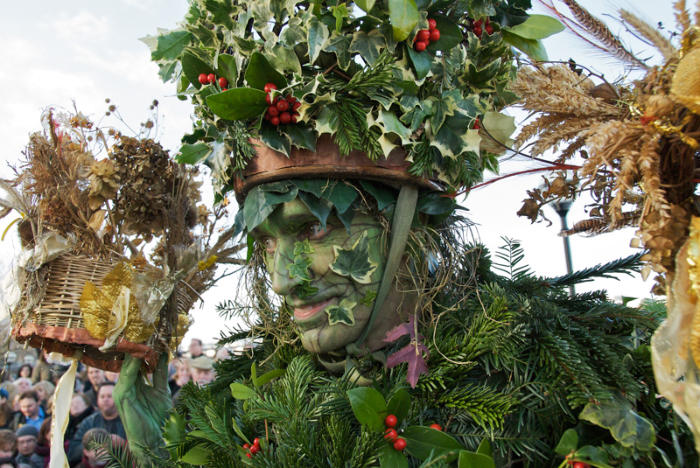
The Hollyman, a member of The Lions part, wassails (toasts) the people of London and the River Thames on Twelfth
Night to encourage a fertile year ahead. The theatre group perform annual Bankside festivals enlivening ancient
traditional seasonal customs for contemporary audiences.
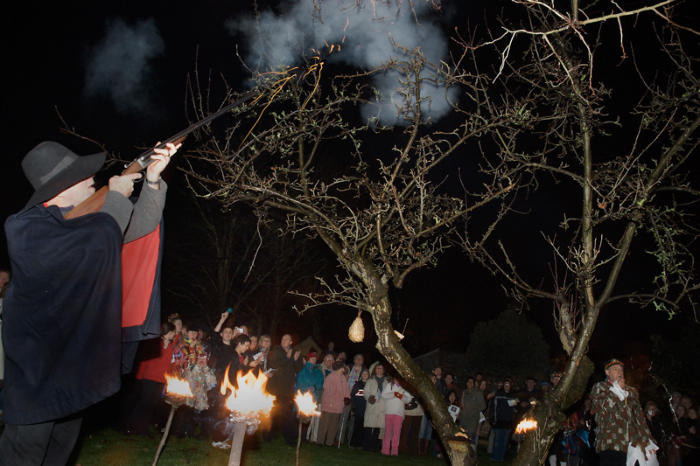
Members of Sompting Village Morris in Sussex wassail the orchard, to wish the trees abundant crops. Cider is poured at
the roots and cider drenched toast is tied to the branches to ‘feed’ the trees. Then a gun is fired to awaken the orchard
and ward off evil spirits. Everyone then joins in the ‘Wassailing Song’.
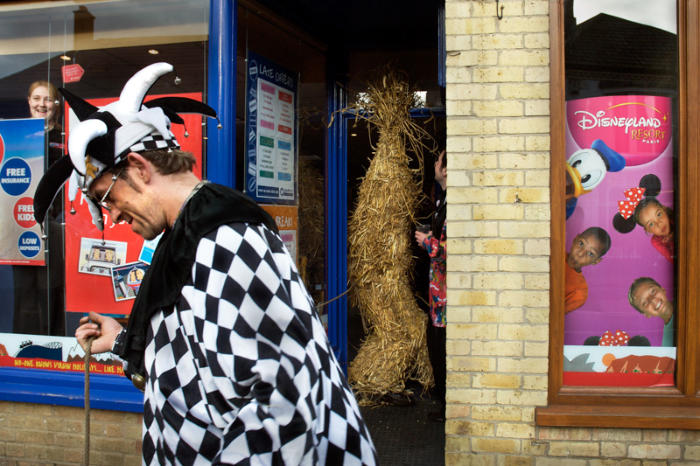
A straw bear from Walldürn in Germany joins in the Whittlesea Straw Bear parade in Cambridgeshire. The late medieval
custom of the Straw Bear was revived in 1980. On the Tuesday after Plough Monday (January 6th - the traditional start
of the agricultural year) a local man is covered in straw and led around the town accompanied by musicians and Morris
dancers.
On Easter Saturday the Britannia Coconut Dancers, accompanied by the Stacksteads Silver Band, perform spring ritual
dances along the boundaries of Bacup in Lancashire, wearing maple-wood discs, ‘coconuts’, on their hands, knees and
belt, that they strike together in time with the music. It is thought that Moorish pirates taught local miners the dances,
their blackened faces may reflect protection from evil spirits or may simply derive from the mining experience itself.
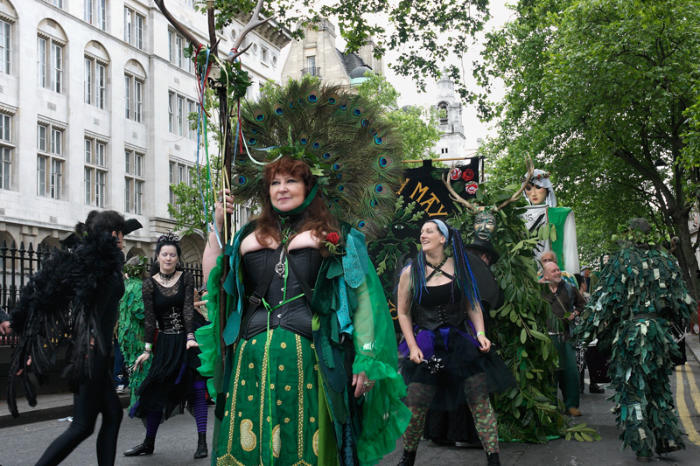
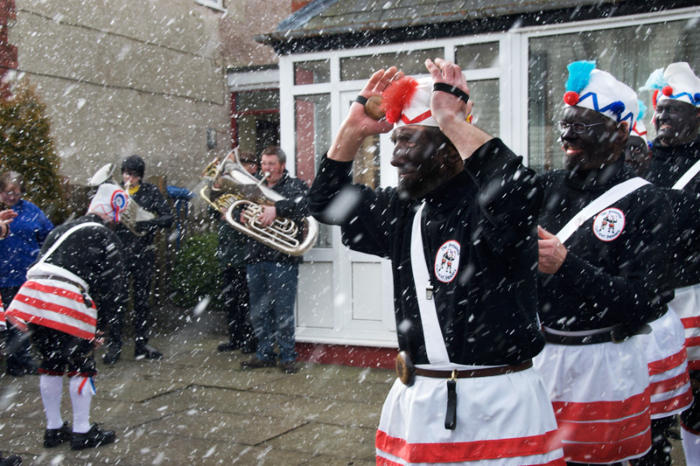
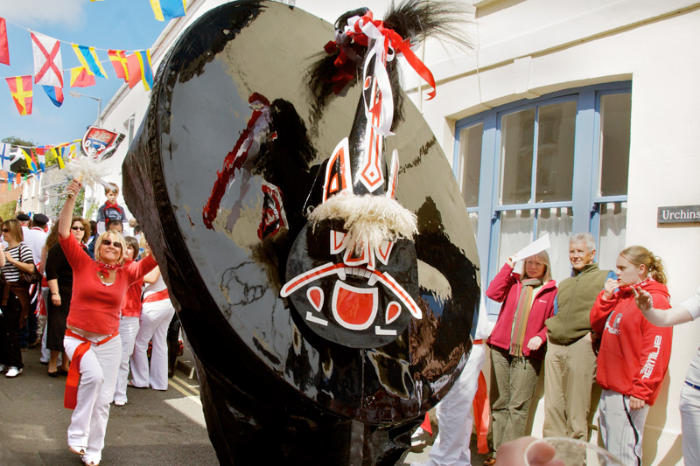
On May Day in Padstow, Cornwall hobby horses (or ’obby ’osses) dance through the streets goaded by a ‘teaser’
brandishing a decorated club. Dancing and singing with the ’osses is believed to bring good luck. The people of Padstow
suggest that their May Day ritual might derive from Celtic Beltane celebrations or a cliff top display to frighten enemies.
Beltane marks the beginning of the bright half of the year and occurs when livestock herds were traditionally driven to
their summer pasture. It is considered by Pagans to be a Sabbat, one of the eight solar holidays. The Beltane Bash,
started in 1998, opens with a Pagan Pride Parade through the streets of London.
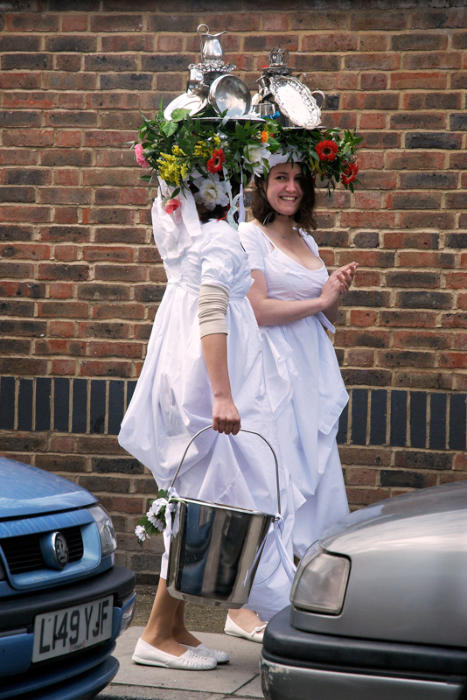
Seventeenth century records show that on 1 May, milkmaids danced through the
streets carrying silverware, flowers and ribbons on their heads, collecting tips
from their regular customers. Chimney sweeps joined in playing rough music and
creating the Jack-in-the-Green, celebrated annually by Fowlers Troop in Deptford,
London.
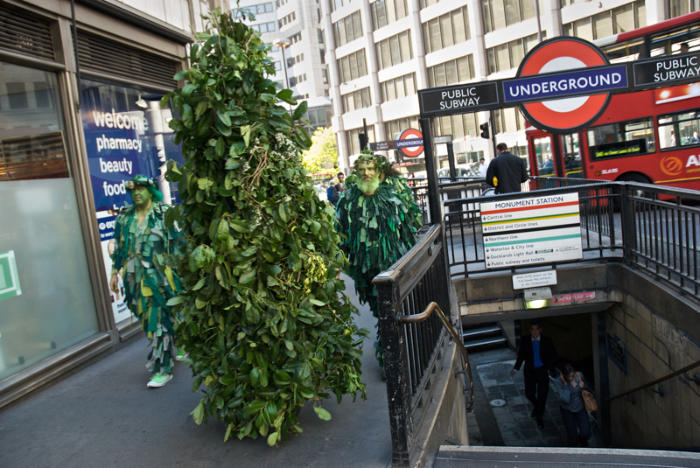
Members of Hastings Jack in the Green join the Fowlers Troop and Deptford Jack in the Green in their annual procession,
this year passing through the city of London. In the early 1980s Blackheath Morris Men and friends revived the original
1906 Fowlers Troop May Day celebration.
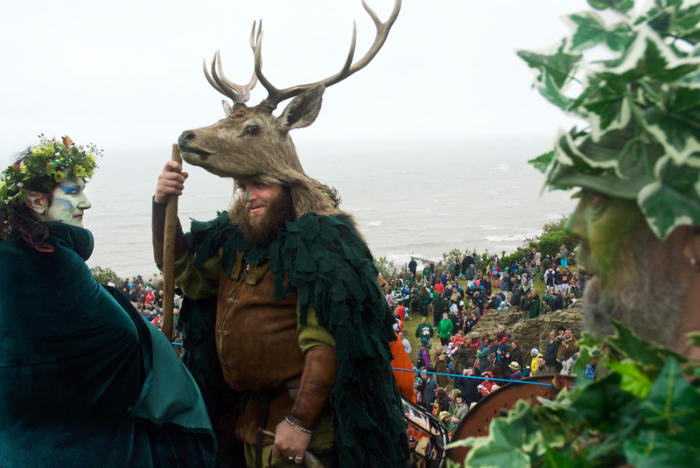
In 1983 Mad Jack’s Morris Dancers revived the custom of Jack in the Green in Hastings, Sussex. The parade featuring
giants, Morris dancers, fire-eaters, Bogies (attendants of the Jack) and musicians attracts thousands of participants and
spectators.
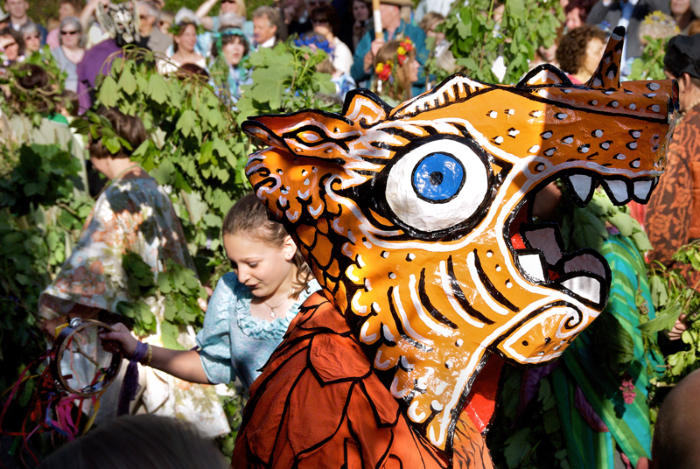
The Hal-an-tow ritual drama is performed by the people of Helston in Cornwall to mark the arrival of spring on Flora Day
(named after the Roman goddess). Locals also decorate the streets with greenery and participate in a day of street
processional dances.
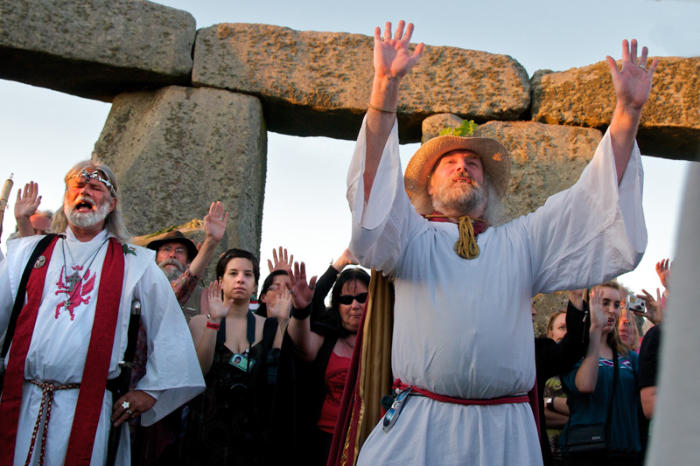
Summer Solstice ceremony conducted by senior members of the Council of British Druid Orders at Stonehenge in
Wiltshire. Controlled access was granted in 2000 for the public to visit the site, considered by many to be sacred.
Approximately 21,000 people now gather annually to watch the sun rise.
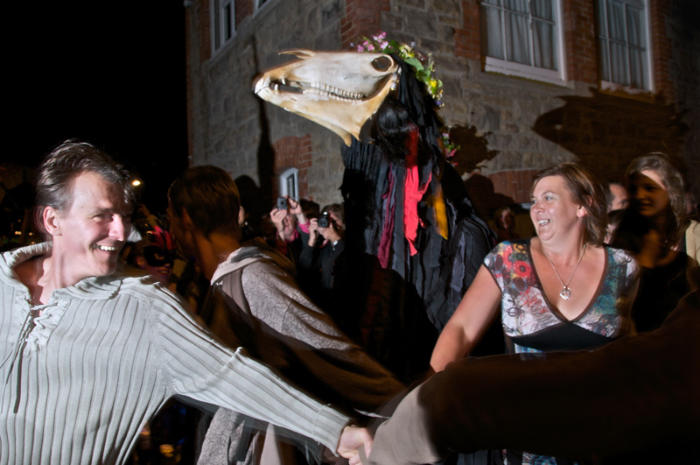
In 1992 ancient Mazey Day festivities were revived in Penzance, Cornwall to coincide with Golowan, the midsummer feast
of St John. Penglaz, a tall ’obby ’oss bearing a horse’s skull appears at midnight accompanied by a ‘teaser’, known as the
‘Bucca Gwidden’ (spirit of light), who goads the ’oss with a decorated club in a serpentine dance along the quayside.
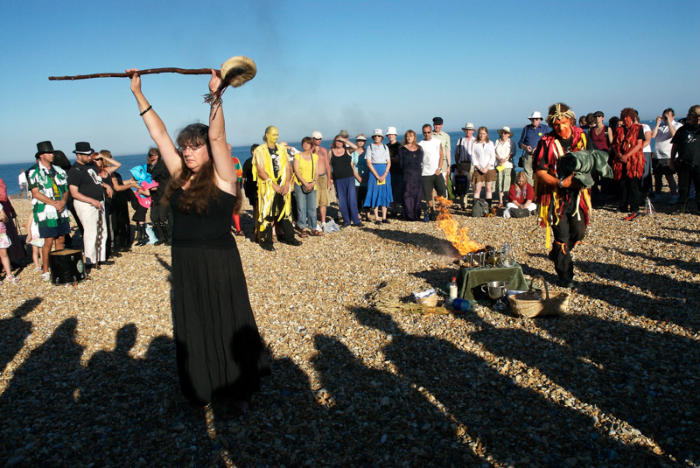
The word ‘Lammas’ derives from ‘loaf mass’, the name of an ancient celebration traditionally held at sunset on 1 August
with the cutting of the first corn. Since 2001Eastbourne in Sussex has held Lammas celebrations including a rite to give
thanks for the harvest and a dance performed by Hunters Moon Morris.
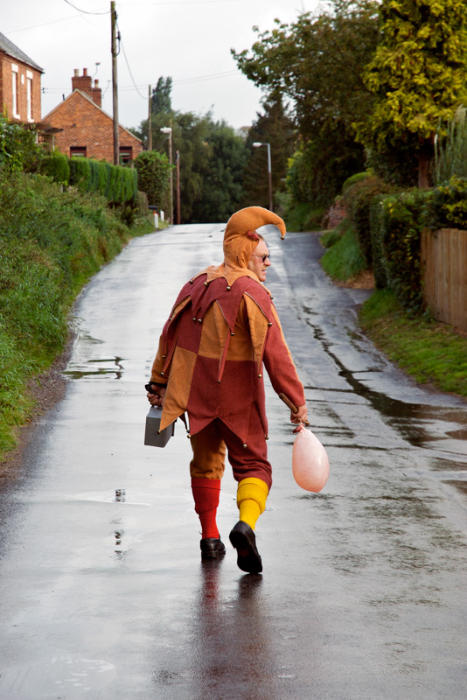
The Fool, carrying a pig’s bladder (a fertility talisman), leads the Abbots Bromley
Horn Dancers on a procession for 16 kilometres through the Staffordshire village
stopping for the dancers to perform at specific locations believed to ensure a
plentiful harvest.
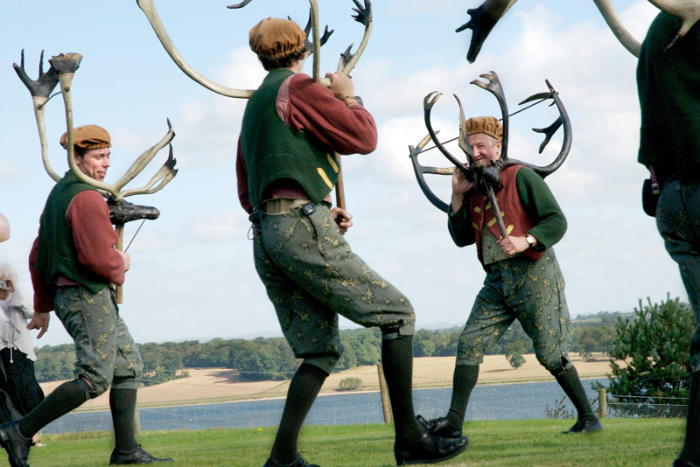
The Abbots Bromley Horn Dancers perform at a local farm where they receive a feast in gratitude. Origination of the
tradition is claimed from 1226 at Barthelmy Fair. In the morning the dancers attend a service at the local church where
they collect the reindeer antlers.
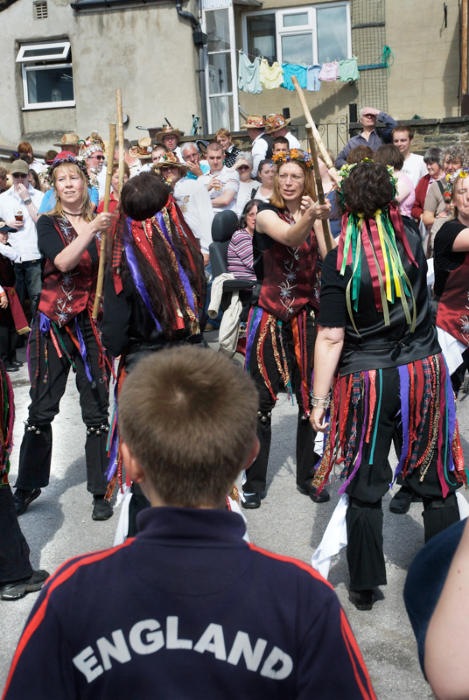
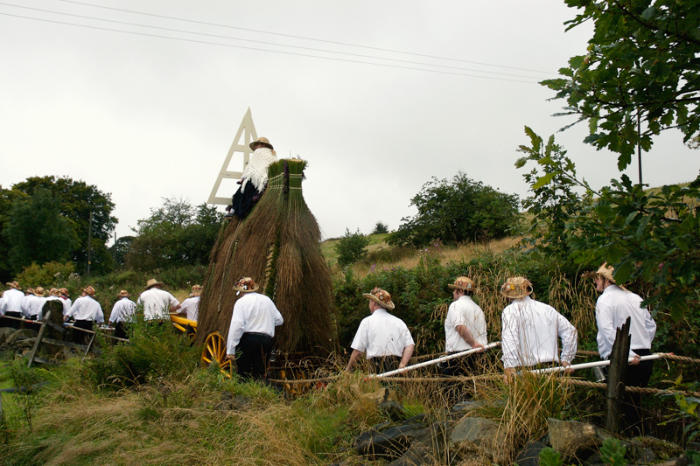
The all-female Hebden Bridge Hill Millies, pictured here at Sowerby Bridge
Rushbearing Festival, was formed in 2002 and performs traditional dances at
festivals throughout the country.
Rushbearing, the ceremonial taking of rushes to churches for floor covering, was common in the north of England during
the Middle Ages. Sowerby Bridge in Yorkshire initiated the current two-day festival in 1977. A team of sixty men pull the
rush cart around the town using ropes and wooden poles.
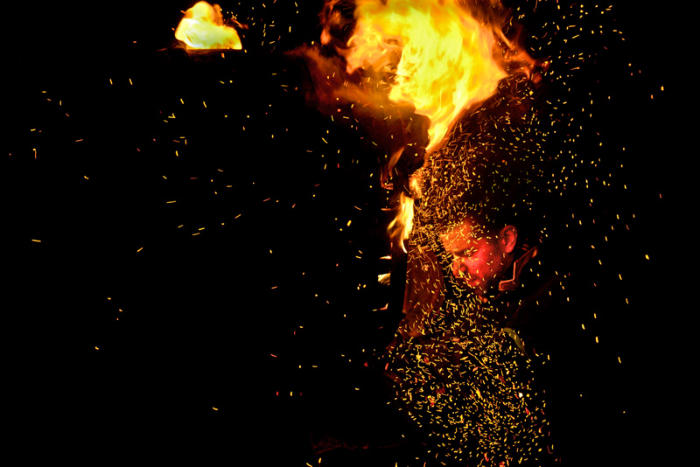
At dusk on 5 November in the Devon town of Ottery St Mary in Devon tar-soaked flaming barrels are hoisted on to the
backs of children and adults who run through the streets. Generations of the same family proudly participate and the
event is attended by thousands of spectators. Adults pass their barrels to the next person until it turns to ashes.
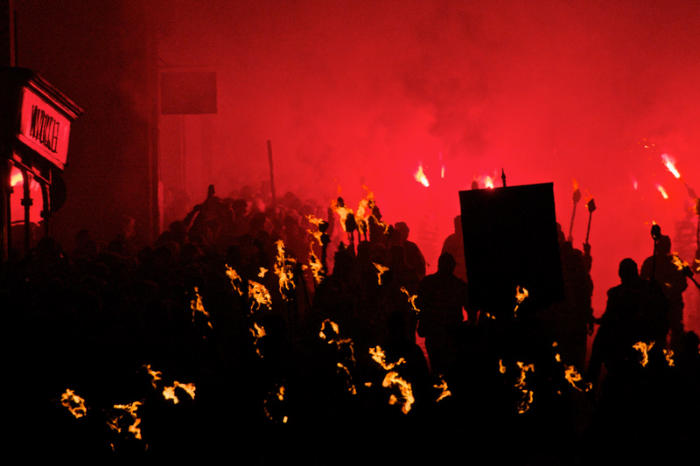
Sussex Bonfire Societies light up the dark nights with torch-lit parades, firework displays and remembrance ceremonies
from September to December. In Lewes flaming tar barrels are dragged through the streets. There is also a procession
of seventeen burning crosses to commemorate the Sussex Protestant Martyrs who were burned at the stake during
1555–58.
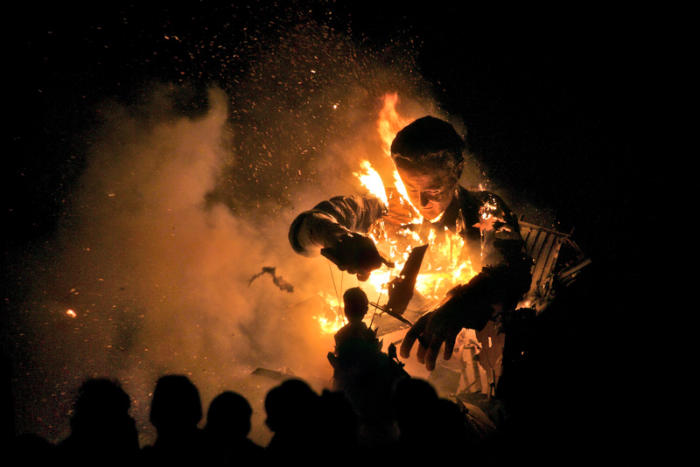
On Bonfire Night effigies known as ‘Enemies of the Bonfire’ are ignited like this 2010 model of the then Prime Minister
David Cameron manipulating a puppet of Deputy Prime Minister Nick Clegg, at Cliffe Bonfire Society, Lewes, Sussex.









